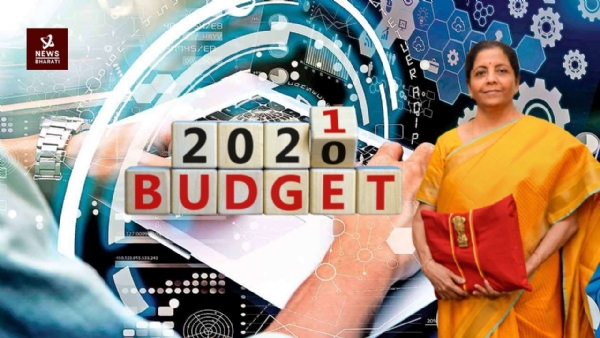De-Sovietise India’s 2021 Science Budget
29 Jan 2021 13:24:14
The global COVID-19 pandemic has made a far-reaching impact on India's economy in the past ten months. The pandemic brought India's discrete research and development (R&D) infrastructure into the eye of an economic storm suddenly. The shortages of large volumes of ventilators, personal protective equipment (PPEs), medical beds, wearable diagnostic devices, polymerase chain reaction machines, cold storage chains, and medical oxygen supplies all revealed an enormous systemic issue - the stuntedness of India's national R&D ecosystem.

The Indian government is one of the lowest spenders on R&D among the large economies of the world. It has spent consistently between 0.6 to 0.8% of its gross domestic product (GDP). With such consistency, the growth in fractional expenditure on R&D remains directly proportional to the nominal GDP growth. The fraction is still lower than those maintained by smaller economies like Israel (4.3%) and South Korea (4.2%) and larger economies like the United States (2.8%) and China (2.1%). India's share in global R&D expenditure is around 2.8%, whereas that of China, with whom India shared the same economic growth trajectory until 1990, now dominates 20% of global R&D expenditure.
India's earlier governments deliberately molded the national scientific ecosystem in a Soviet-like socialist model from where they sought inspiration. Since then, the subsequent governments were burdened with funding research from grapes, leather, and cotton to fusion reactors, supercomputers, and Mars exploration. A large chunk of the annual science budgetary allocation goes to government-run laboratories working on defence, biosciences, industrial, medical, pharmaceuticals, space, atomic energy, engineering, and transdisciplinary sciences. These laboratories are based in universities, laboratory consortiums, and in public sector companies. However, the government no more is the sole torchbearer of financing science, technology, and innovation.
Given the ongoing global scientific and techno-economic trends, the private sector is becoming an equally large financier of R&D efforts and output globally. The trend is evident in India too. Laboratories of domestic- and overseas-origin private companies have often outranked government-run laboratories in terms of the number of patents filed. R&D laboratories of Indian companies like Wipro and Tata Consulting Services, or foreign companies like Huawei and Qualcomm have been consistently topping the charts computed by the Office of the Controller General of Patents, Designs, Trademarks, and Geographical Indications in India. At times, these companies file more patents than all IITs and CSIR laboratories combined. The world is currently in the midst of a transition into the Fourth Industrial Age. Right on the brink of this new era, the global economy grapples with an unforeseen global biological pandemic. India's budget plans will have to shun the mundaneness associated with the gross expenditure on R&D (GERD). The budget planning will have to be relevant to the times that are upon us.
The unprovoked antics of China and Pakistan on the Line of Actual Control and along the international border amid the pandemic and resurfaced a harsh fact: India's rise as a benevolent superpower is being confronted forcefully. Moreover, in an increasingly multipolar world, many superpowers and potential superpowers are realigning their technology strategy. Prime Minister Narendra Modi's call for self-reliance through the Aatmanirbhar Bharat is therefore not a one-off. It finds equivalence with the U.S.' Make America Great Again plan, China's Dual Circulation Strategy, and France's bid to make the European Union self-reliant.

The Aatmanirbhar Bharat initiative intends to mitigate the impact of COVID-19 in the short-run and propel India into the 5 trillion dollars plus economy grouping by the middle of 2024. These ambitions give the government a strong rationale to increase the national R&D expenditures above 1% of the national GDP. India is already in the advanced stages of drafting the Science, Technology, and Innovation Policy 2020 (STIP-2020), which has provisos for diversification of financing science, technology, and innovation pursuits.
My recommendation for corporate science responsibility dated August 2017 finds mention in the draft STIP-2020 in the private financing clause. The under-preparation STIP-2020 draft should emphasize the exclusivity of the corporate science responsibility (CSciR) mechanism. The government should incentivize only those companies that support only low technology/business readiness level science and innovation projects. It should avoid providing CSciR incentives to companies interested in projects that have reached high technology/business readiness levels. Such exclusivity around CSciR will cultivate a norm for seeking private funds to support basic sciences with long gestation periods. The private sector's early association with the basic science project of their choice will make them a stakeholder in the novel intellectual property and provide them a skin-in-the-game. This alternate funding mechanism will directly create new skilled employment opportunities for scientists, technocrats, IP lawyers, engineers, management professionals, and indirectly many opportunities for semi-skilled professionals.
The financial year 2020-21 is about to end with a profound and pinching realization about the importance of science for India's comprehensive security needs. The Fourth Industrial Age and COVID-19 pandemic are a good omen to get rid of the prehistoric socialist vestiges. There is a high probability that the fractional GERD could rise towards 1% of GDP. The first budget of the decade of 2020s could be pregnant with Aatmanirbhar Bharat-driven financial reforms for the scientific sector.